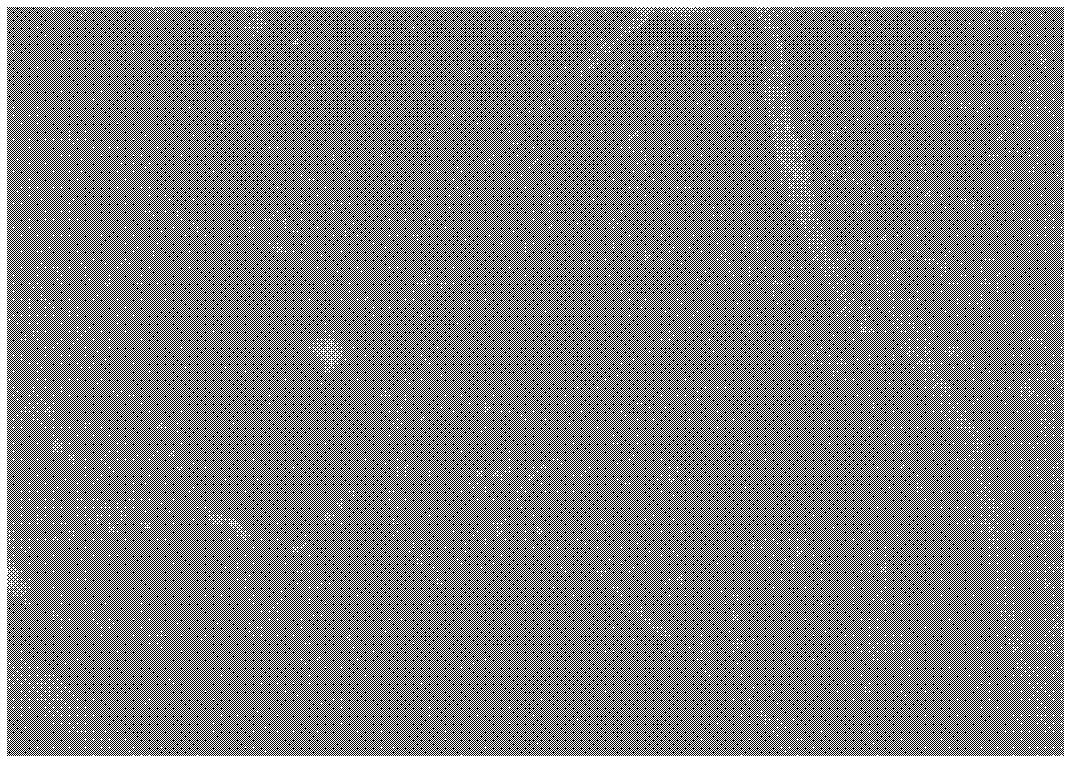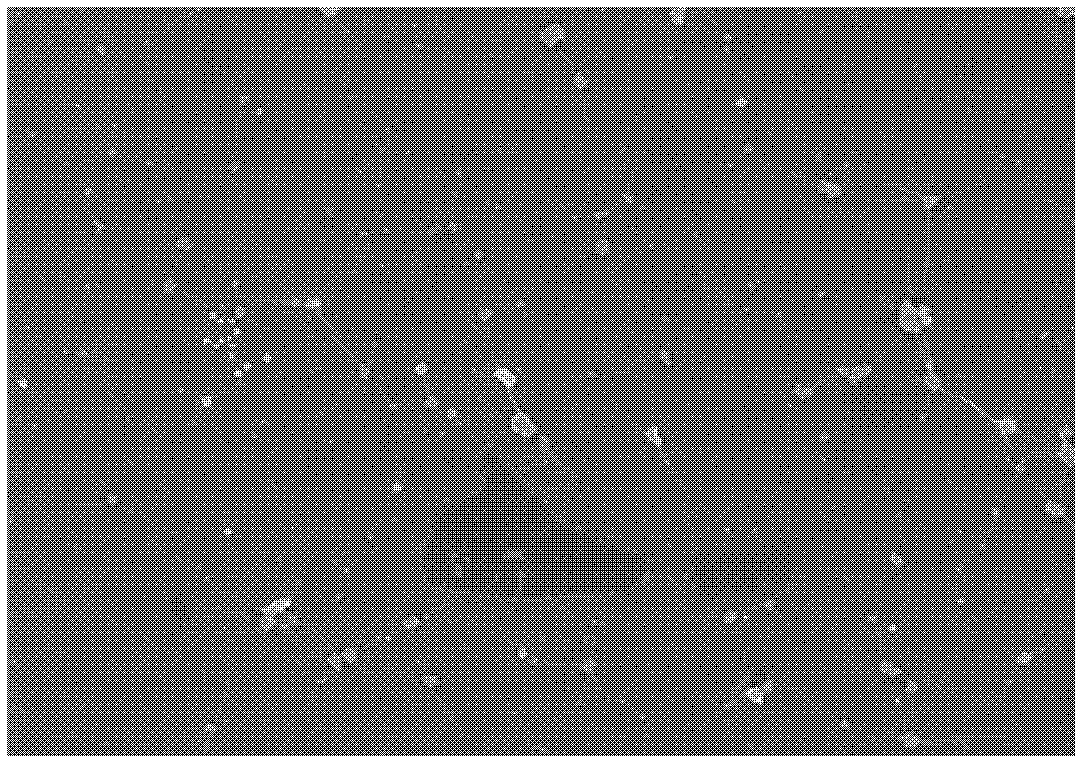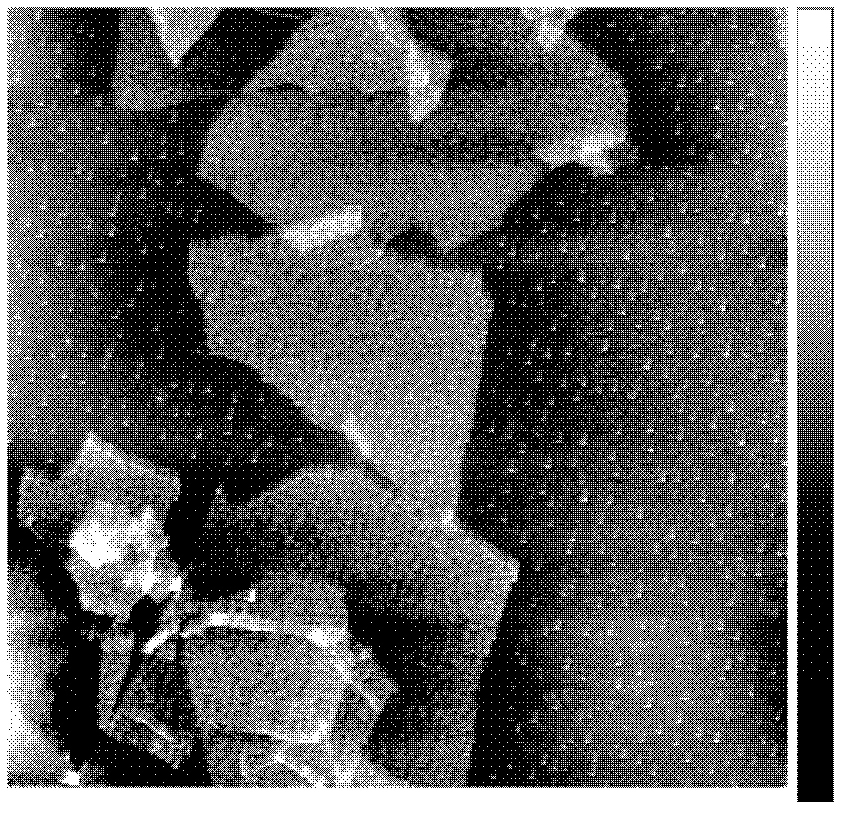Nanocomposite material preparation method based on graphene oxide autocatalysis
A nanocomposite material, graphene technology, applied in the field of functional material chemistry, nanomaterials, can solve the problems of slow progress in nanocomposite materials research, and achieve the effects of environmental friendliness, good electrical conductivity, and high specific surface area
- Summary
- Abstract
- Description
- Claims
- Application Information
AI Technical Summary
Problems solved by technology
Method used
Image
Examples
Embodiment 1
[0029] 1) preparation of graphene oxide:
[0030] Add 230mL of concentrated sulfuric acid with a mass fraction of 98% to a dry beaker, cool to 0°C with an ice-water bath, add natural flake graphite (10g), NaNO 3 (5g) and KMnO 4 (30g). Control the temperature of the reaction solution at 10-15°C, stir and react for a certain period of time; then place the beaker in a constant temperature water bath at about 35°C, and continue stirring for 30 minutes when the reaction temperature rises to about 35°C; finally add deionized water while stirring, Control the temperature of the reaction solution within 100°C, and continue stirring for 30 minutes. Dilute the reaction solution to 1000mL with deionized water, then add an appropriate amount of 5% H 2 o 2 , filtered while hot, fully washed with 5% HCl and deionized water until there was no SO in the filtrate 4 2- . (with BaCl 2 Solution detection), promptly obtains the purified graphene oxide.
[0031] 2) Synthesis of graphene ox...
Embodiment 2
[0037] (a) Take 100mL graphene oxide solution (0.5mg / mL) in a clean glass bottle;
[0038] (b) Draw 10mL of 0.1M chloroauric acid solution with a dropper, add dropwise to the above graphene oxide solution under magnetic stirring, mix well, and place at room temperature for 72 hours;
[0039] (c) ultrafiltration or dialysis to remove excess unreacted ions and nanoparticles in the solution to prepare graphene nanocomposites;
[0040] (d) Performance characterization by AFM, SEM and other means.
Embodiment 3
[0042] (a) Take 100mL graphene oxide solution (0.6mg / mL) in a clean glass bottle;
[0043] (b) Draw 50mL of 0.05M silver nitrate solution with a dropper, add dropwise to the above-mentioned graphene oxide solution under the action of magnetic stirring, mix well, and place at room temperature for 72 hours;
[0044] (c) ultrafiltration or dialysis to remove excess unreacted ions and nanoparticles in the solution to prepare graphene nanocomposites;
[0045] (d) Performance characterization by AFM, SEM and other means.
[0046] The graphene nanocomposite material that above-mentioned embodiment obtains, as Figure 1-4 as shown, figure 1 , figure 2 The scanning electron micrograph of the graphene oxide nanocomposite material prepared for the embodiment of the present invention; image 3 , Figure 4 It is the atomic force electron microscope image of the graphene oxide nanocomposite material of the embodiment of the present invention.
[0047] In the invention, the carboxyl g...
PUM
 Login to View More
Login to View More Abstract
Description
Claims
Application Information
 Login to View More
Login to View More - R&D
- Intellectual Property
- Life Sciences
- Materials
- Tech Scout
- Unparalleled Data Quality
- Higher Quality Content
- 60% Fewer Hallucinations
Browse by: Latest US Patents, China's latest patents, Technical Efficacy Thesaurus, Application Domain, Technology Topic, Popular Technical Reports.
© 2025 PatSnap. All rights reserved.Legal|Privacy policy|Modern Slavery Act Transparency Statement|Sitemap|About US| Contact US: help@patsnap.com



